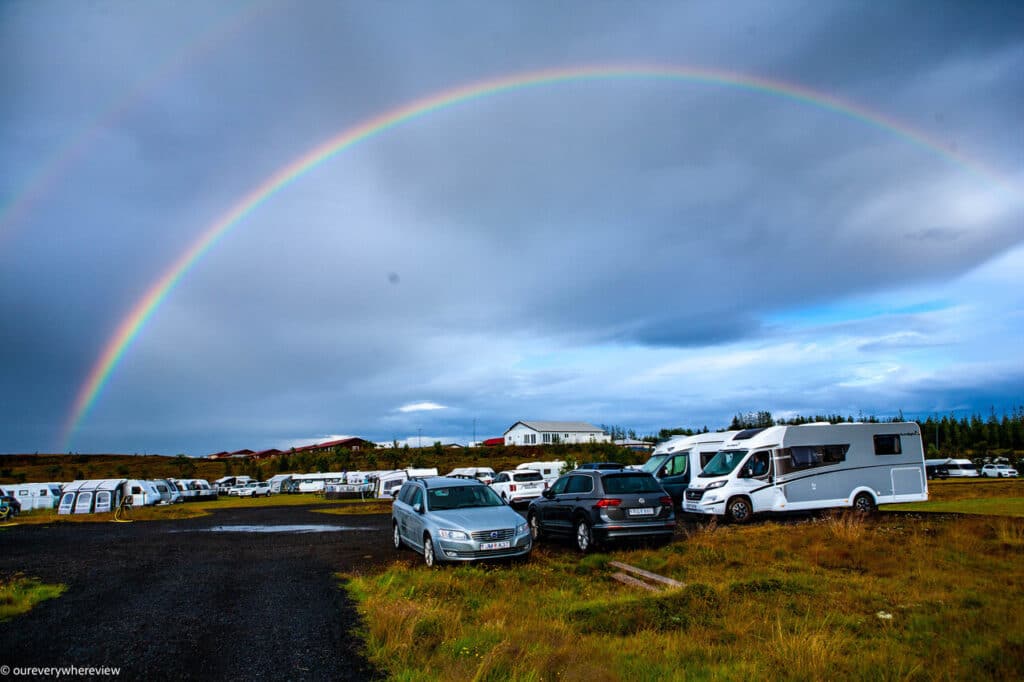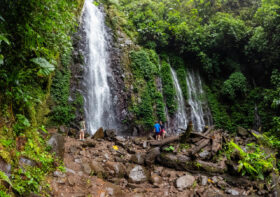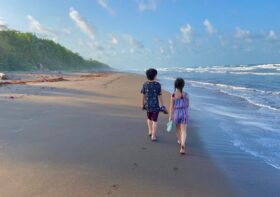Iceland by motorhome: a guide for families and first-timers
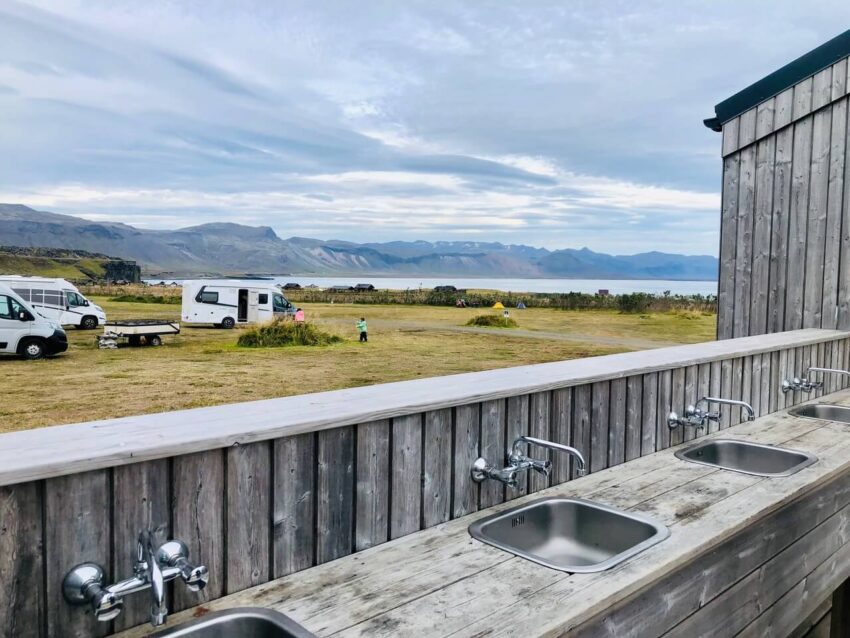
If there’s one takeaway from this post on traveling Iceland by motorhome, I want *everyone* to know IT CAN BE DONE. Yes, even if you’re traveling as a family (and this includes small children!) Yes, even if you’ve never stepped foot inside a motorhome until now.
We traveled through Iceland for two weeks as a family of four, joined by another family of four in a separate motorhome. No one in our group had ever traveled by motorhome. None of us are campers. We had *no* idea what we were getting into. Needless to say, there were some moments of significant doubt building up to our trip. After our two weeks, I can confidently say road-tripping Iceland by motorhome was one of the best decision we made. Not only was it budget friendly (relatively speaking, in Icelandic terms), it was convenient, cozy, and enhanced our adventures by allowing us to camp in the most beautiful of places.
In this post, we shared why you should consider camping in Iceland, and how to get started on booking the vehicle that best suits your travel needs.
In this guide, we hope to share the tips we collected on our adventures to help you make the best of your campervan or motorhome experience in Iceland. Most travel articles we’ve come across while planning for our camping trip are for campervans (Iceland’ most common camping vehicle). While most of our tips apply to campervans as well, we wanted to share our experience traveling as a family by motorhome.
* You may frequently find us referring to our motorhome as a “RV” (recreational vehicle) in our articles, because we tend to use that term interchangeably in Canada.
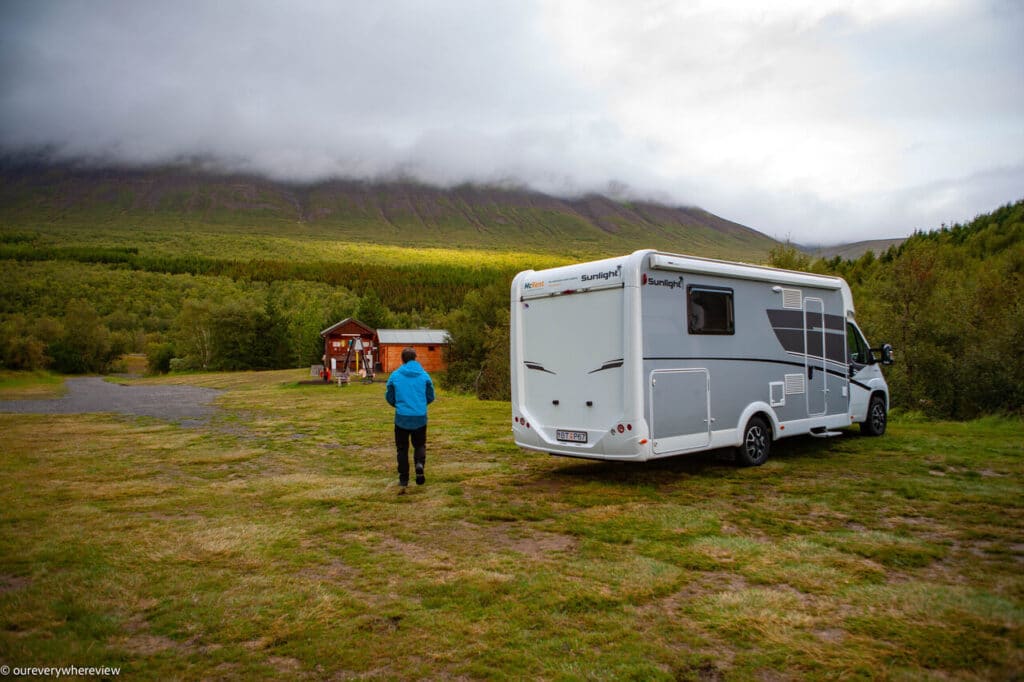
Why we chose to rent a motorhome
As we discussed in our other article, there are basically three types of vehicles you can rent for camping in Iceland. Campervans, motorhomes, or some type of truck or 4×4 with a popup or slip-on camper.
We were not planning to off-road into Iceland’s highlands or the Westfjords, where you need a 4×4 vehicle. (We definitely did not feel prepared to do that for our first camping trip!)
Campervans tend to be the most common camping vehicle in Iceland. We saw way more campervans on the road than motorhomes, and there are more campervan rental companies. Campervans are basically large vans that have been retrofitted into living spaces. Because it’s more compact, most of the parts are mobile (eg. the seats fold down into beds, or the table slides out of the way when not in use). There is a small kitchen zone, usually with an ice-box, a gas burner, and a water tank.
I was actually quite excited to rent a campervan, and see how creative we could get making the most of the small space.
However, given how often our kids randomly and unpredictably blurt out they need to pee, having a toilet was what ultimately drove us to renting a motorhome. We didn’t want to be spending our time scrambling for bathrooms along the way. (Not to mention Iceland does have paying toilets at some of the touristy sites. And it *really* felt like a luxury to not have to venture out into Iceland’s chilly night to use the bathroom.) A few campervans do carry composting toilets, but ultimately the configuration did not work out for the 4 of us.
Renting a motorhome initially felt like a little bit of a copout. But I have to admit it 100% made life way easier for us, and we got to enjoy Iceland without having to contend with the daily struggles of sleeping, feeding, dressing, and entertaining 2 kids in a very tiny space.
Benefits of renting a motorhome
Besides the aforementioned toilet situation, motorhomes are fantastic for traveling with kids.
Space
Yes, motorhomes are bigger and more spacious. But having a defined “dining/lounging” space, kitchen, bathroom, and sleeping area was a lifesaver. The kids had more room for their road-trip activities, and we didn’t have to worry so much about continuously packing and unpacking everything to make room for what we needed to do.
It also gave everyone a bit more personal space, so we didn’t feel like we were all up in each other’s faces the entire time. Big S, in particular, likes his alone time to read and recharge. And I can’t imagine having to fold down seats every time the kids wanted to nap or lie down.
Storage space
A whole other kind of space we appreciated. When we had considered renting a campervan, I’d even read about hooking up bungee cords to the roof to store gear.
With all the outerwear and layers every time we left the van, including wet and muddy hiking shoes, it was definitely nice to have more space to put stuff. Not to mention the dedicated storage space for foods/snacks (so many snacks), toiletries, etc. (Check out this post for our Iceland packing checklist.)
Cooking is way easier
Our motorhome had a good size fridge and freezer, as well as a stove with multiple burners. The motorhome also had a pretty large water tank. This made it easy to grocery shop for multiple days, make all our food in the motorhome, and even do the dishes if we wanted to. We had more options for what we could cook, and didn’t have to use the campsite facilities much as all.
Maybe because we are newbies at this RV-life, our meal-planning may not have been as efficient as it could have been, but we found the kitchen super useful.
The kids are happier during long drives
Okay, so there’s probably also the novelty factor.
But since the kids are essentially sitting at the table when you are driving, we found they could craft, draw, colour, build, and otherwise occupy themselves for way longer than in a regular car. (Not to mention access to *aallll* the snacks.)
Downsides of renting a motorhome
It’s expensive
Renting a campervan can cost as little as 2500 euros for 2 weeks. That’s really not so bad, when you consider Iceland among the most expensive countries in the world.
Renting a motorhome is at least double that. Factor in gas (we found we needed to fill up approximately every 3-4 days), a propane tank refill here and there (8000 ISK, or 80 CAD), and it is significantly more expensive than a campervan.
It’s more difficult to maneuver
The thing is a beast. It’s big, very long, and has a huge blind spot. Even Daniel, who once drove a truck, had his moments.
The motorhome struggles a fair bit on inclines, and you really need to hang on to all your loose belongings at turns. Because the vehicle has a higher centre of gravity, you can really feel the wind when it picks up.
Parking was the most challenging. We’d frequently find ourselves sneaking into bus spots when dedicated RV parking wasn’t available.
More maintenance required
Compared to a campervan, a motorhome requires more work. This includes filling up the sizeable water tank, and emptying out grey and black waters.
Overall, renting a motorhome is a great choice if you want to experience camping in Iceland, but still have the comforts to keep the entire family happy. Did we feel spoiled at times? We definitely did! (But then again, we were on vacation. 😉
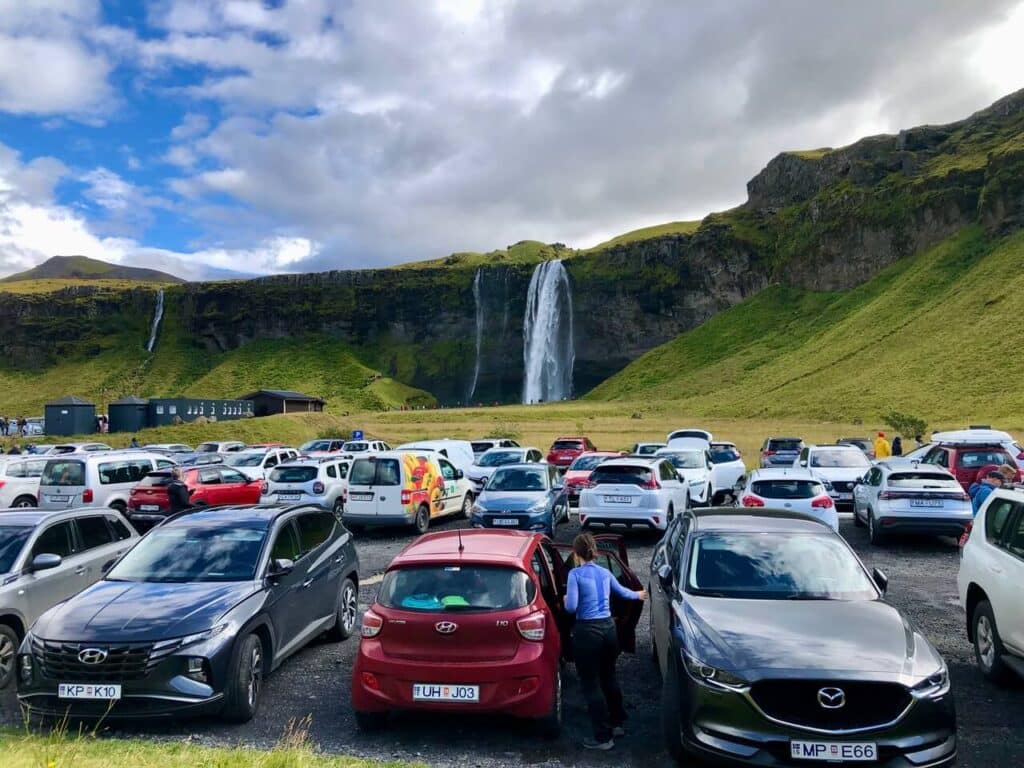
Tips for driving a motorhome and staying safe on the road
Your driver should feel comfortable driving a manual and ideally have experience with large vehicles
As we alluded to before, it’s pretty challenging driving a motorhome. Not only is it cumbersome to handle on the road, the spatial awareness required to drive it is a whole other level.
Daniel drove a moving truck for a few months back in the day, and even still found the motorhome a challenge, particularly in crowded spaces/parking lots. The motorhome is also not equipped with many of the safety features we’re used to in newer cars, such as blind spot warning. There is a camera at the rear, but even the rental agency will point out it’s at a very odd angle.
Do not skip out (even mentally) on your rental agency’s orientation
Our road safety orientation was maybe half an hour. This is the last thing you want to sit through, when you’ve just gotten off a red eye flight and can’t wait to get started on your adventure.
We found it very useful. Our session included information on dangerous weather, specific roads to avoid, how to prevent common incidents. (Eg. be very careful opening your outward swinging car door in windy conditions – it might just fly right off the hinges!)
Know your road conditions
The Icelandic Road and Coastal Administration (IRCA) used to have an app that let you check your route in near real time. They no longer offer this app, but have up to date information on their website at road.is
We didn’t find we needed to use this as much in the summer, but it is definitely a must in the colder months when planning your route for the day. The site shows roads that are dangerous, slippery, snowed in, impassable, etc.
Avoid “F” roads
Off-roading routes start with the letter “f”, and are only for 4×4/off-roading vehicles. These are found largely in Iceland’s highlands and Westfjords, or along Iceland’s north coast. Motorhomes are not equipped to handle these roads.
Know your weather
The Iceland Meteorological Office’s Vedur.is is an absolute must have. They do have real time information on their website, but it’s best to download the Vedur app either from the Google Play Store or Apple App Store.
Iceland’s weather changes every 10 mins every 10 km (don’t quote me on this, but it sure feels like it.) Not only is this helpful information, the app will warn you about storm warnings and dangerous driving conditions.
Wind was the most common concern we had in the summer, especially in a motorhome that’s quite high off the ground. It’s recommended to pull over if wind hits 15 m/s. Vedur will issue a yellow warning for “beware of high winds”.
Do not stop by the side of the road
Most of Iceland’s roads, including the Ring Road, are single lane, and it’s dangerous to pull over by the side of the road. Furthermore, Iceland’s shoulders are soft gravel. We definitely passed a handful of cars who’d gotten stuck.
There are plenty of designated areas to pull over and admire the view or have a picnic. However, what we found is due to the size, the RV takes time to stop. By the time we’d see the sign for parking, there was no way we could safety turn.
Avoid route 939 (“the Oxi Pass”), and route 894
We normally trust Google, but these are two famous instances in Iceland where in trying to shave time Google leads you astray. Our rental agency did warn us about both of them, but we only recognized these were *them* after we were well on our way. Route 939 is a shortcut leading to Egilsstadir in Iceland’s east. Route 894 leads to Dettifoss in Iceland’s north. Neither of these routes are “f” roads, but they are both gravel, full of potholes, and very challenging to handle in a motorhome. (939 is definitely uncomfortably steep for a motorhome.)
Bring your child safety seat
In Canada, children under 8 are required to be in booster seats. (Iceland recommends being in a booster seat until 135 cm.) We brought travel-friendly mi-Fold booster seats. These did not latch as well to the motorhome’s bench seating as they do in our cars back home, but it did the trick.
Tips for campsites in Iceland
No pre-booking required at Iceland’s campsites!
Unlike most campsites in North America, there is no way to reserve a spot at a campsite ahead of time. This is actually one of the reasons camping is a fantastic choice in Iceland. You can easily adapt where you spend the night if your plans change.
The campsites are *huge*, and we never had to worry about a full campsite.
Campsites are easy to Google
We had less than half our campsites planned out in advance. Sometimes we didn’t even hit the campsite we’d researched because we were simply too tired to drive the extra 10 km to the one with the better view. Many times we simply searched on Google for the nearest campsites and chose the one that had the right amenities and best reviews.
There are a lot of campsite maps you can download in advance. Many rental companies will provide their own maps. But we found this wasn’t necessary.
Ways to pay your campsite fee
Every campsite does charge a fee. This is usually around 1000-2000ISK (10-20 CAD) a person, plus extra amenities. Kids under 12, sometimes 15, are free.
There is sometimes a link on the campsite website where you can pay online. Other times there are instructions on where to pay when you enter the campsite. Some sites have rangers that come around either in the evening or morning to collect the fee. All of them take card.
There is a parking app you can download, where you upload your card info and can easily pay your parking with a few clicks. We found this was mostly useful for Reykjavik. Even the campsites that were included on the Parka app typically took you to the camp’s website.
… What about Iceland’s Camping Card?
Iceland offers a Camping Card you can purchase from the website ahead of time, or at the participating campsites when you arrive. You can also buy them from many convenience stores and visitors centres.
It’s costs 179 euros, which is about 250 CAD (25 000 ISK), and is valid for 1 “camping unit” (ie. 1 campervan). It includes up to 2 adults and 4 kids. It currently (as of 2022) covers 35 camping sites.
We did not end up buying the Camping Card, as we did not want to be restricted to which campsites we could choose from. In the end, we only ended up staying at 1 site covered by the Camping Card.
Stay in the National Park campsites
One of the biggest reasons we didn’t buy the Camping Card was we wanted to stay at some of the National Parks. These, we feel, are some of Iceland’s most beautiful spots. You are surrounded by nature and gorgeous scenery. (Not to mention is right *at* the attraction you came to visit.)
We stayed at Thingvellir National Park, Skaftafell National Park, and Arnarstapi, within Snaefellsnes National Park (that glorious view in our first photo). These were some of our most memorable and favourite campsites.
… don’t forget city campsites!
Sometimes, campsites in the cities are hella convenient, too. Most of the sites are next to gas stations and grocery stores, which is handy for stocking up. These also tend to be the most well equipped, with plenty of electricity spots, showers, laundry, etc. Our campsite in Vik was one of the kids’ favourites – just a short drive away from a public pool and playground. The view was certainly not too shabby.
Be sure to check the campsite amenities
For motorhomes specifically, this includes a disposal site for grey and black water (used water from sinks/shower and toilet, respectively.) *Not every campsite has this*!
You may find you need to be plugged in, some nights, in order to charge all your devices. With our inverter, we did not need a spot with electricity at all during our 2 weeks.
Other amenities can include wifi, laundry, playground (a huge bonus for us). All campsites have sinks, toilets and showers, but some of the smaller sites may only have 1 shower for the entire campsite.
The amenities in Iceland are so good, we found we enjoyed doing dishes at the communal sinks, even though we had a sink. (And not only were we treated to amazing views, it was a great way to meet people at the campsites.)
Some amenities require a fee, including showers (timed), electricity, and laundry. Some campsites offer these for free, so check for that if, for example, doing laundry is on your radar.
Use the public pools for showers
Nearly every Icelandic town has a public pool. The entrance fee costs 900 ISK (9 CAD). So it’s not exactly “free”, but for the price of a shower at a campsite, you get to enjoy the pool and multiple geothermal heated hot tubs!
A word on motorhome maintenance: water tank, grey and black water disposal
Out of everything that came with renting a RV for the first time, how to empty out our tanks felt like the most daunting!
We generally had to perform motorhome maintenance every 2 days or so. We did this in the morning before we set out for the day, and it really wasn’t as bad as I expected. Campsites with disposal systems will usually have a grate/well. You need to drive over this area and position your grey water tank over this grate. You typically access your tank with a wrench that comes with your rental. Emptying out the grey water can take up to 10 minutes. You can use this time to check off all your other duties.
Unlike septic systems in North American RV’s, you don’t need an extra pipe that plugs into your black water tank. Iceland RV tanks are portable, and you simply cap it and remove the entire thing. This tank can be emptied over the same or different well for black water.
You’ll find 2 hoses at most campsites. 1 for freshwater you can use to fill your water tank, the other for cleaning. Iceland has *pristine* fresh water, and the water that comes from the hose is 100% drinkable.
Easy peasy. 🙂
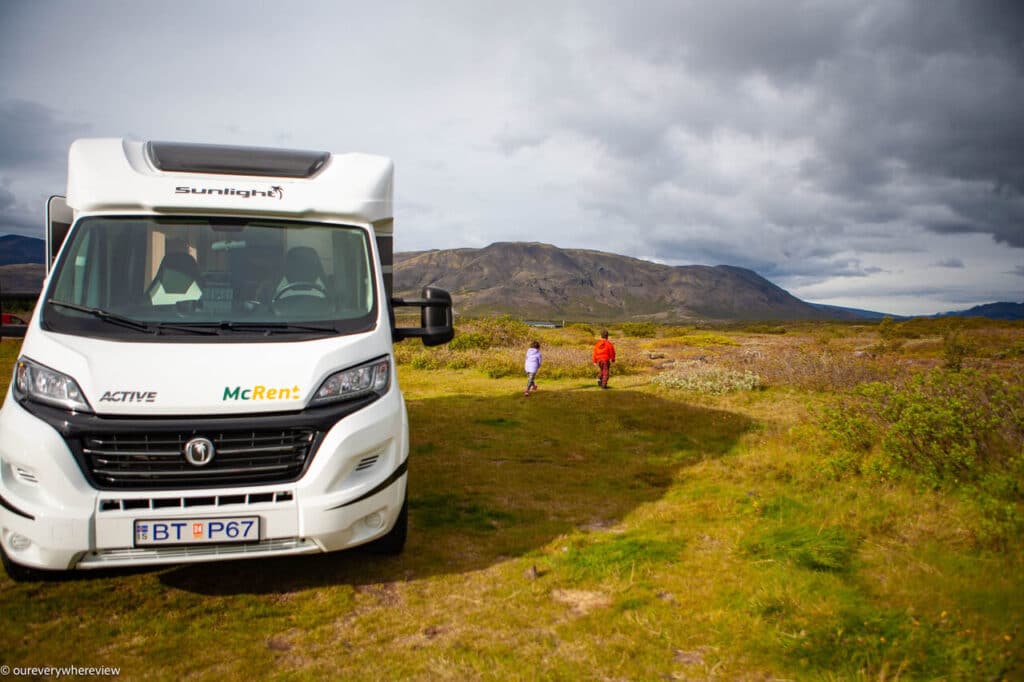
Extra motorhome tips!
Bring an inverter!
We’ve already mentioned this as a must-have extra in our RV rental article, but it is so important we thought it worth mentioning again.
You can either rent, or buy and bring an inverter for your motorhome. This plugs in to the cigarette lighter, and converts the car battery’s DC current to AC current. You can use this to power all your travel devices! Otherwise, you will be replying on one or two USB ports, and will need to connect to campsite electricity to charge your devices.
Save the bathrooms for number 1 only
Self-explanatory. It is *very* difficult to neutralize smell in a motorhome!
No showers in the RV
This, of course, is up to you! But not only will you use a ton of water and propane to heat your shower, your motorhome shower might not be watertight. Our shower was in the bedroom area, and only separated from the rest of the room by a thin plastic divider. There are plenty of showering alternatives, including campsites showers, and showers at public pools and geothermal baths.
… Which brings us to our next point:
Things that get wet in Iceland will not dry
Your wet shoes, socks, towels, etc. stay perpetually damp in the cool, wet weather, even when hung outside. On the rare sunny days, we’d rush to lay out our wet clothes in any patch of sunlight we could find.
What we found effective was to leave the really wet stuff inside the camp lodge overnight. Some sites provide shoe and clothing racks.
Save propane by turning off the heat at night
Even in the summer, Iceland’s nights get cold. Like, wear your ski socks to bed and layer up cold. But leaving the heat on all night can burn through a tank of propane every 3 days or so. What worked for us was to turn on the heat for an hour or two before bed. Once you’re under the covers it’s not bad at all! On extra cold mornings we’d turn on the heat for another hour or two. Most mornings we warmed up the motorhome by turning on the stove to make coffee. Using our heat sparingly, we only went through one propane tank during our entire 2 weeks.
Last of all…
Not everything will go smoothly. We certainly had some hiccups along the way. One night, it was raining heavily, and we pulled into the nearest campsite. Our wheels sank right into the mud, and we needed a truck and several very helpful campsite owners to pull us out. (Maybe that should be another tip – stay on the asphalt if it’s raining heavily…)
But at no time did I ever think, “man, I wish we hadn’t done this!”
Renting a motorhome in Iceland was definitely the one thing that made our trip as memorable as it was. We highly highly recommend it. Even with kids (especially with kids!) Even if you’ve never done it before. We hope you found some useful tips from our experience, and feel free to reach out with any questions!
